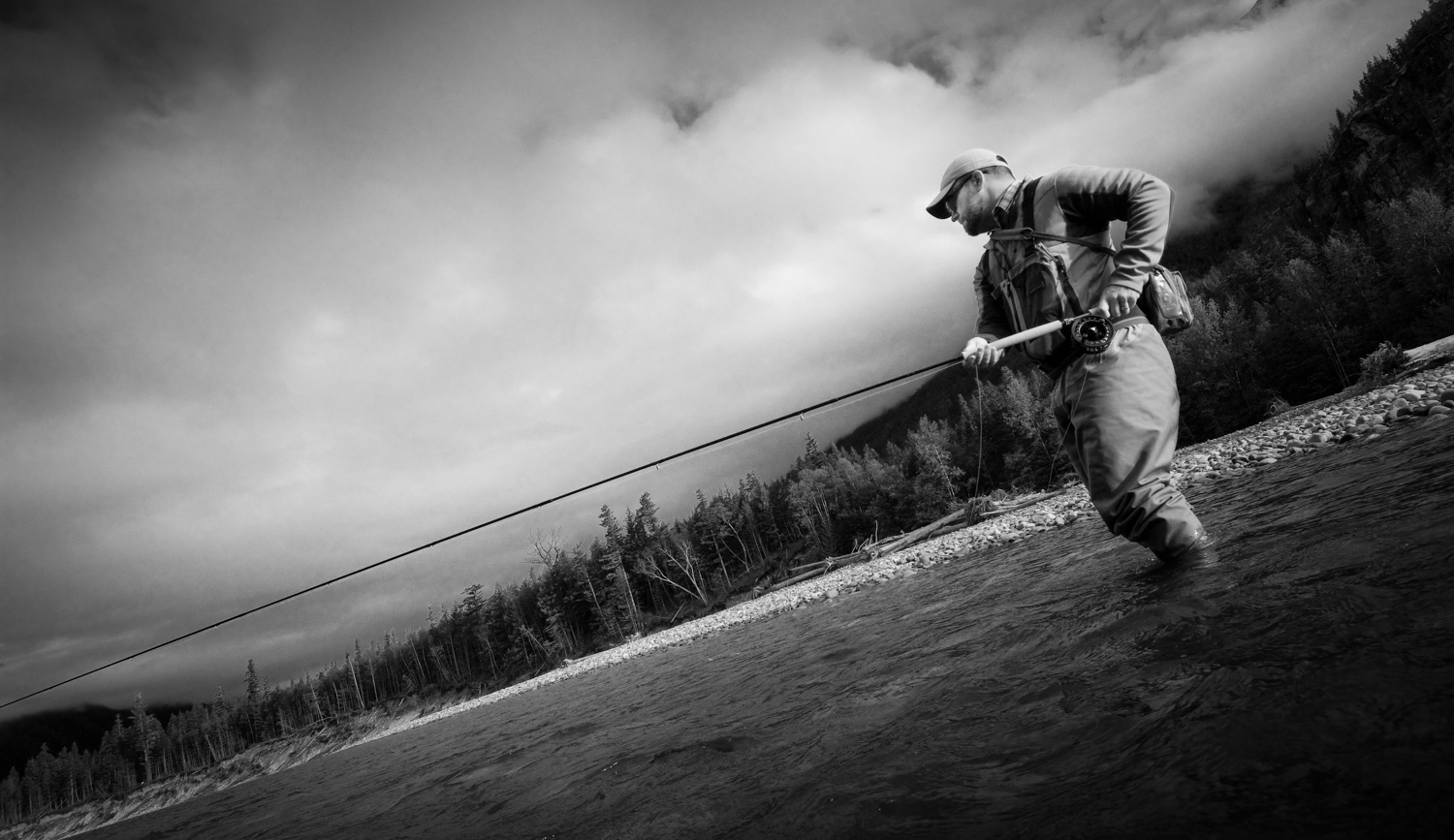By Louis Cahill
When you’re swinging flies with two-hand rods, landing the cast straight is always better than making a long cast.
Look, I’m as guilty as any of us. We all want to launch the fly into orbit around the sun. It feels good, it looks good, and in our minds it makes us better anglers — but does it really? I’m prepared to make the argument that it doesn’t even make us better casters. My personal definition of a good cast is, a cast which catches a fish, and that’s not always the longest cast. Especially when you’re swinging flies.
It’s the swing that catches the fish, not the cast. Of course, you want to cover as much water as you can, but only if you are covering it effectively. If you make a long cast, but a poor swing, you may be putting your fly in front of fish that wouldn’t see a short cast, but you’re not offering them a presentation they will eat. What worse, you’re making a poor presentation to the fish you could have reached with a better cast.
Catching fish, especially steelhead, is all about a good swing.
You want the fly to swing at just the right angle and speed to trigger the eat. Too fast, too slow, or presenting the wrong profile to the fish, and your odds of a hookup drop dramatically. You’re looking for a nice buttery swing with just a gentle belly in the line. For a much more detailed explanation, click here.
To accomplish this, you need a cast that turns over nice and straight every time. Most anglers, even those brand new to spey casting, can do this with a short cast but start running into problems when they try to cast long. If you’re having this issue, there are two things you need to do. First, fish the cast you can make. If you can only cast forty feet and land the cast straight, then fish that forty foot cast. Second, get to work on the problem.
When your line doesn’t land straight, it’s because your casting stroke isn’t straight. One of the fundamental rules of fly casting with any rod is that the rod tip must travel in a straight line. In spey casting this is most often a result of “rounding the corner” of your sweep. It’s pretty common for anglers to do this as they try to cast farther.
In an effort to speed up the cast, many anglers will start the casting stroke too early, before the sweep is complete.
Rounding the corner creates a casting stroke, which curves from the outside in, causing the fly to hook up or downstream, depending on which side of the river you are casting from. If the fly hooks upstream, your swing will be too fast. If it hooks downstream, it will be slow and awkward. In both cases you may be able to salvage the cast with a good mend, but not often, and you will have wasted a good bit of your swing.
A good way to stop yourself from rounding the corner is to do a quick mental check before beginning your casting stroke. To do this without pausing and losing the load in the rod, think of aiming the cast with the butt of the rod. When your sweep is finished, the butt of the rod should be pointed towards your target. If it isn’t, you can not make a straight casting stroke. If your hands are in line and the butt of the rod is pointed at the target, straight is the only way you can go.
This is not going to instantly take you from a forty-foot cast to a hundred-forty feet, but it will get you moving that direction.
If it gets you to sixty feet, fish that sixty-foot cast and work on keeping that stroke nice and clean. There is plenty of power in a spey rod. Distance is not about force, it’s about form. Focus on the fundamentals and the distance will come with practice. In the meantime, fish the cast you have. There are plenty of fish you can reach.



Of course the cast is important, but after some 30 years of fishing Oregon rivers for steelhead, and watching fishers butcher their subsequent drift after a cast hits the water, I humbly suggest that mending is even more important than casting. You want the fly to slowly drift one foot in front of the fish, at the correct depth, pointed upstream, while the currents put a little wiggle to your offering. First, learn how to use a curve cast so the belly of your line is upstream from your leader at the start. Then, learn how to immediately pick up, and throw, a big upstream mend, right down to the line-leader connection, without dragging your presentation 10 feet in toward you. After that initial flurry, little upstream mends are all that is needed to lead your fly toward the fish. Simple.
Pingback: Don’t Cut Corners With The Spey Rod | Fly Fishing | Gink and Gasoline | How to Fly Fish | Trout Fishing | Fly Tying | Fly Fishing Blog